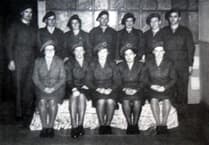THE South East Coast Ambulance Service trust has come under fire for running a three-month pilot project which delayed emergency crew response times by an extra 10 minutes.
The trial scheme from December 2014 until February 2015 meant up to 20,000 patients, including those with life-threatening problems, had to wait twice as long, and was launched without the knowledge of NHS 111 call staff, board non-executives, the medical director or local commissioners of services.
NHS watchdog Monitor is taking action after finding the service, which covers Surrey, Sussex, parts of North East Hampshire and Kent, failed to give sufficient consideration to the impact on patient safety or fully inform the trust board.
SECAmb ran the scheme in response to the high pressures it was facing locally during the last winter.
The pilot changed how it handled some NHS 111 calls which were transferred to the 999 emergency system to give itself additional time to deal with more urgent calls.
The pilot applied this extra time to calls which were placed in the second most serious category for issues which may be life threatening but less time-critical.
National rules say 75 percent of Category A Red 2 calls should have an emergency response at the scene within eight minutes.
These calls are for conditions regarded as serious, such as strokes or fits, but less time critical than for calls where people are not breathing or do not have a pulse.
Under the SECAmb project, the trust gave itself up to 10 extra minutes to reassess what type of advice or treatment patients needed, and whether an ambulance was really necessary.
Monitor voiced concerns about how the trust is being run and how decisions are being taken.
It also has reasonable grounds to suspect the trust is in breach of its licence to provide NHS services.
The regulator is working with the trust to identify what needs to be done to review the impact the project could have had on patients.
SECAmb will also commission a review into the way it handled the project and more widely into the way it makes its decisions.
Monitor has also added a condition to the trust’s licence so that, if sufficient progress isn’t made, further action could be taken.
This includes changing the leadership team at the trust, if necessary.
The watchdog’s report stated: “We cannot conclude patients were not harmed by the R3/G5 project, as all the facts are not known for the calls that went unanswered – or for the callers who had significant delay by the re-triage process.”
A major concern reported was there “was no transparency” with the public, as they were not told their call was going into a queue.
“They thought an ambulance was on its way when this was not true,” the report stated.
Monitor regional director Paul Streat said: “Over the winter, there were significant demands on the NHS and it is understandable that trusts want to explore better ways of delivering the best possible care.
“But this project was poorly managed from the start, done without the proper authorisation and without enough thought given to how it might affect patients.
“We have asked the trust to review the action it took to make sure there was no harm to patients, and look again at the way decisions are taken to prevent something like this happening again.”
SECAmb chief executive Paul Sutton said in response: “The process was undertaken to ensure the right response was provided to patients and we were able to respond promptly to the most seriously ill patients.
“However we recognise it was not well-implemented and we did not use our own corporate governance processes correctly.
“These are serious findings.
“We have already begun to take steps to address Monitor’s concerns and as part of this process, independent reviews will assess how decisions are made within the trust, governance processes and our approach to patient safety.
“As a trust, we remain extremely proud of the high quality and compassionate clinical services SECAmb provides to our patients.”




Comments
This article has no comments yet. Be the first to leave a comment.